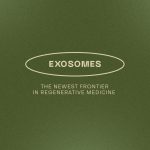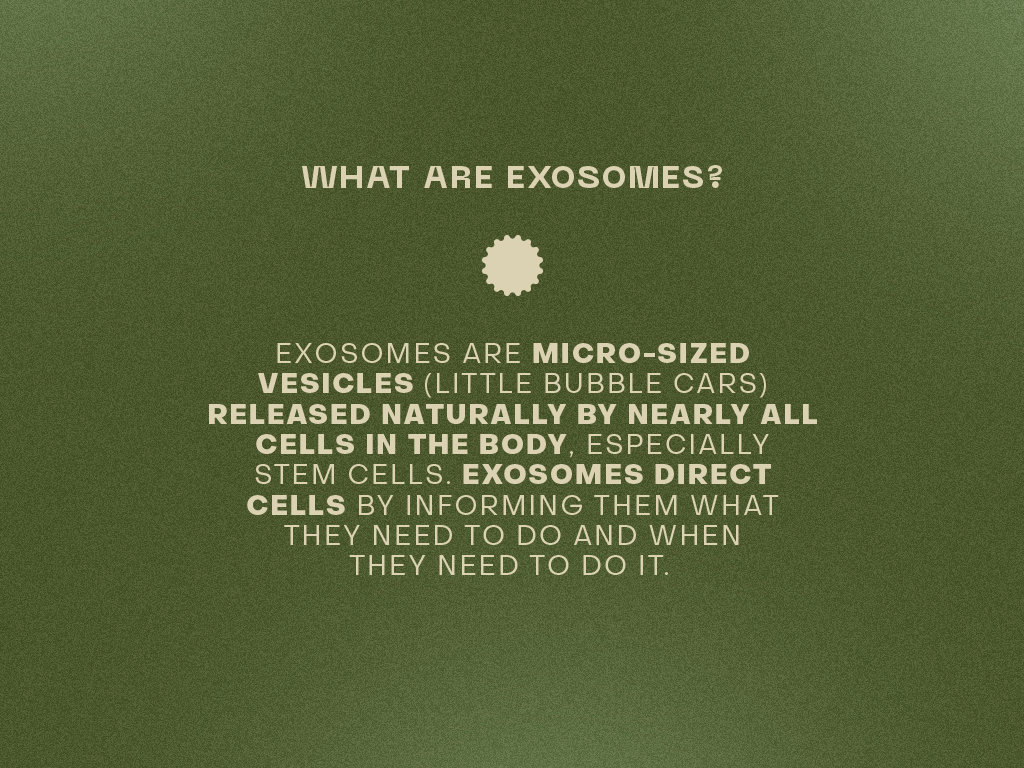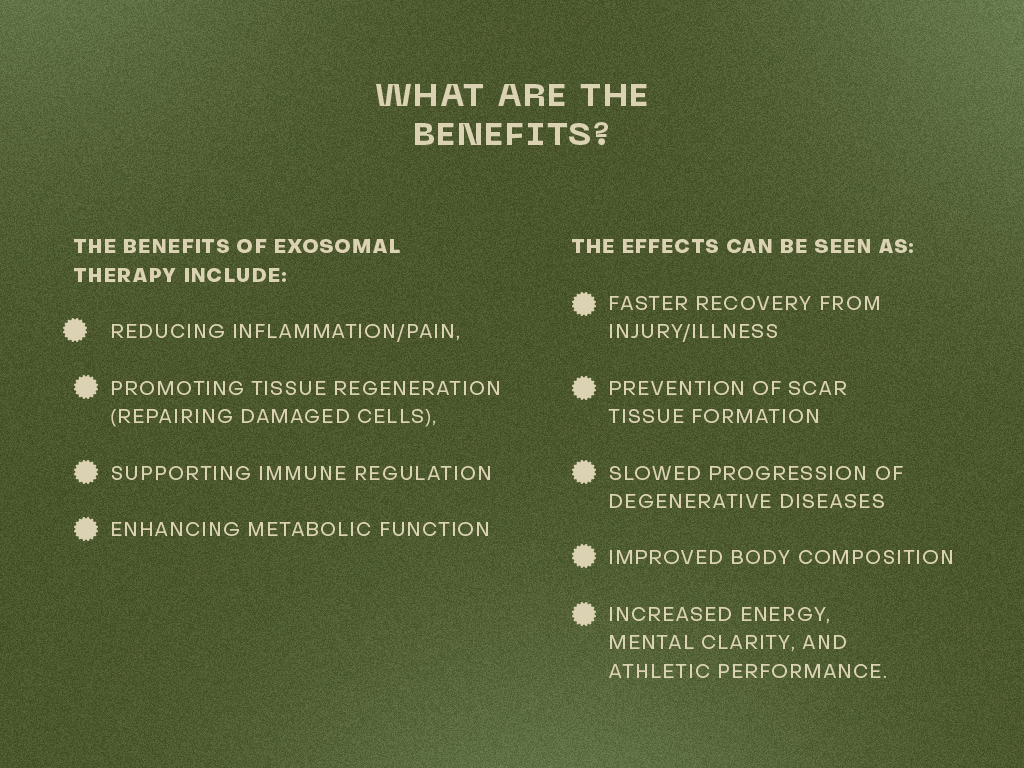Blog
Exosomes – The Newest Frontier In Regenerative Medicine

Exososomal therapy is a cutting-edge technique in regenerative medicine. In the same realm of prolotherapy, PRP therapy, and stem-cell therapy, exosomes offer unique benefits for targeted and body-wide tissue rejuvenation. But what are exosomes and how do they work?
What are Exosomes?
Exosomes are micro-sized vesicles (little bubble cars) released naturally by nearly all cells in the body, especially stem cells. They are therefore considered a cell-free treatment because they are not the actual cells themselves. They carry important proteins and genetic information, which they deliver to cells by fusion and enhance cell to cell communication throughout the body.
With optimized communication, cells are more connected to each other and are better able to carry out their functions. Exosomes direct cells by informing them what they need to do and when they need to do it. For healing to occur, cells need to be able to receive and send orders in accordance with one another to perform efficiently.
So, exosomes are tiny vehicles with precious cargo that improve intracellular signaling to stimulate the body’s ability to heal itself. Although, with increasing age, genetic disorders, environmental factors, and chronic diseases, exosome activity declines and cellular signaling is impaired. This means that inflammation rises, healing is delayed, and degeneration/pain sets in.
Where do Exosomes come from?
Where do these little bubble cars come from? Exosomes are extracted and sterilized from a special type of cell called a mesenchymal stem cell (MSC). MSC cells are unique in that they can become any type of cell (rather than only one specific type of cell). Exosomes exhibit similar functions to stem cells, but they are not the same. Unlike stem cell therapy, exosomal therapy does not involve the use of donor cells, making them a cell-free alternative with potentially less risk and more benefit.
Exosomes are highly concentrated solutions that can be injected directly into an affected body area (most often joints), infused into the body via intravenous (IV) therapy, or topically after a facial treatment. When injected into a joint or after a micro-needling treatment, exosomes enter the site of injury and induce the repair of tissues. When infused into a vein, exosomes enter the bloodstream and travel to target organs to signal their return to healthy functioning – they can even cross the blood brain barrier!
What are the benefits of Exosomal Therapy?
Exosomal therapy is commonly used for conditions characterized by chronic pain and inflammation, such as osteoarthritis, fibromyalgia, and injuries. It has also been used for various autoimmune diseases, degenerative disease, and Lyme disease. Various in vitro studies have exhibited the safety, efficacy, and therapeutic potentiality of exosomes in various cancers, neurodegenerative, cardiovascular, and orthopedic diseases.
The benefits of exosomal therapy include reducing inflammation/pain, promoting tissue regeneration (repairing damaged cells), supporting immune regulation, and enhancing metabolic function. The effects can be seen as faster recovery from injury/illness, prevention of scar tissue formation, slowed progression of degenerative diseases, improved body composition, and increased energy, mental clarity, and athletic performance.
We have seen great results with exosomes when treating joint injuries, chronic conditions, as well as after RF micro-needling treatments. The exosomes act as a healing agent and skin regenerative catalyst to give patients better results with faster healing times.
Exosomes are natural substances and although more research is needed, no long-term side effects have been reported. The FDA has not approved exosomal products, although they have been used therapeutically for many years with promising results! Exosomal therapy has great regenerative potential in targeting disease and promoting overall cell health, performance, and longevity.
Give us a call at LIVV to find out more or book your consultation!
Written by Jordan Valdez, ND, RD
https://www.ncbi.nlm.nih.gov/pmc/articles/PMC8100822/
https://www.ncbi.nlm.nih.gov/pmc/articles/PMC6450000/


